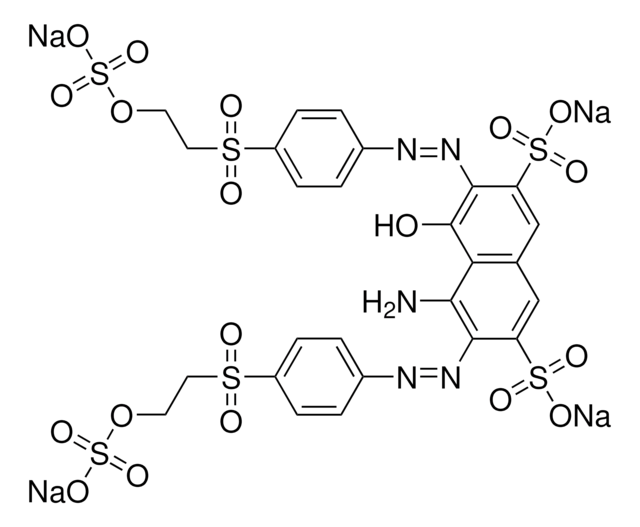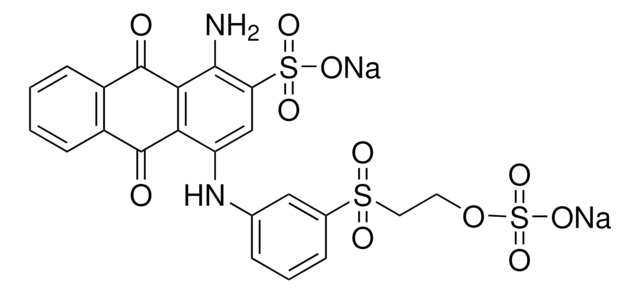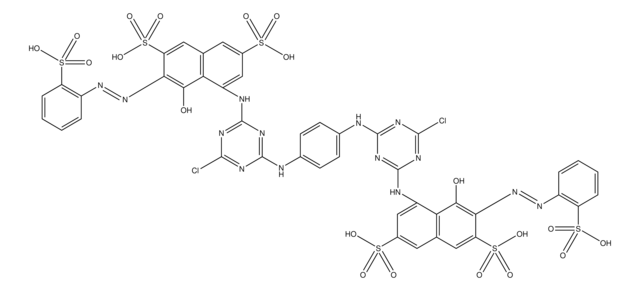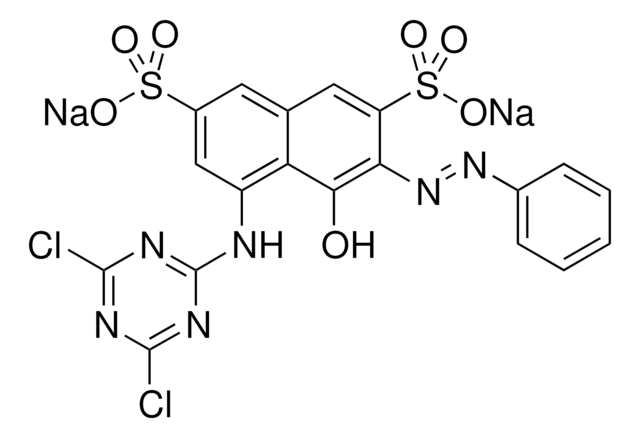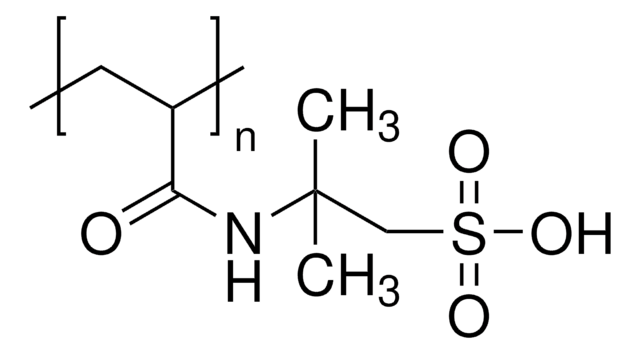Key Documents
244813
Reactive Blue 4
Dye content 35 %
Synonim(y):
1-Amino-4-[3-(4,6-dichlorotriazin-2-ylamino)-4-sulfophenylamino]anthraquinone-2-sulfonic acid, Procion® blue MX-R
About This Item
Polecane produkty
Postać
powder
Poziom jakości
skład
Dye content, 35%
λmaks.
595 nm
Zastosowanie
diagnostic assay manufacturing
hematology
histology
temp. przechowywania
room temp
ciąg SMILES
Nc1c(cc(Nc2ccc(c(Nc3nc(Cl)nc(Cl)n3)c2)S(O)(=O)=O)c4C(=O)c5ccccc5C(=O)c14)S(O)(=O)=O
InChI
1S/C23H14Cl2N6O8S2/c24-21-29-22(25)31-23(30-21)28-12-7-9(5-6-14(12)40(34,35)36)27-13-8-15(41(37,38)39)18(26)17-16(13)19(32)10-3-1-2-4-11(10)20(17)33/h1-8,27H,26H2,(H,34,35,36)(H,37,38,39)(H,28,29,30,31)
Klucz InChI
RTLULCVBFCRQKI-UHFFFAOYSA-N
informacje o genach
rat ... P2rx1(25505)
Szukasz podobnych produktów? Odwiedź Przewodnik dotyczący porównywania produktów
Opis ogólny
Zastosowanie
Informacje prawne
Hasło ostrzegawcze
Warning
Zwroty wskazujące rodzaj zagrożenia
Zwroty wskazujące środki ostrożności
Klasyfikacja zagrożeń
Eye Irrit. 2
Kod klasy składowania
11 - Combustible Solids
Klasa zagrożenia wodnego (WGK)
WGK 2
Temperatura zapłonu (°F)
Not applicable
Temperatura zapłonu (°C)
Not applicable
Środki ochrony indywidualnej
dust mask type N95 (US), Eyeshields, Gloves
Wybierz jedną z najnowszych wersji:
Masz już ten produkt?
Dokumenty związane z niedawno zakupionymi produktami zostały zamieszczone w Bibliotece dokumentów.
Klienci oglądali również te produkty
Nasz zespół naukowców ma doświadczenie we wszystkich obszarach badań, w tym w naukach przyrodniczych, materiałoznawstwie, syntezie chemicznej, chromatografii, analityce i wielu innych dziedzinach.
Skontaktuj się z zespołem ds. pomocy technicznej